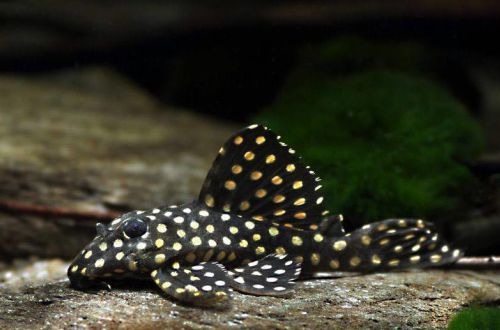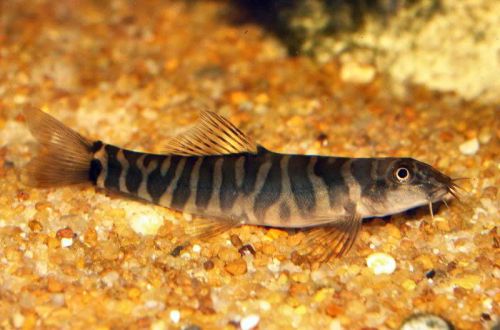
Allen’s Rainbow
Hilaterina or Allen’s Rainbow, scientific name Chilatherina alleni, belongs to the family Melanotaeniidae (Rainbows). Endemic to the western part of the island of New Guinea, located in the western Pacific Ocean north of Australia.

A typical biotope is streams and rivers with a slow or moderate flow. The bottom consists of gravel, sand, covered with a layer of leaves, snags. Fish prefer shallow areas of reservoirs well lit by the sun.
Description
Adults reach a length of up to 10 cm. Fish have a wide range of color variations with a predominance of blue, blue, red, orange. Regardless of the specific variation, a common characteristic is the presence of a large blue stripe along the lateral line. The edges of the tail, dorsal and anal fins are red.
Behavior and Compatibility
Peaceful moving fish, prefer to stay in a flock. It is recommended to purchase a group of 6-8 individuals. Compatible with most other non-aggressive species.
It is noted that slower tankmates will lose competition for food, so you should carefully consider the choice of suitable fish.
Brief information:
- The volume of the aquarium – from 150 liters.
- Temperature – 24-31°C
- Value pH — 6.0–8.4
- Water hardness – medium and high hardness (10-20 dGH)
- Substrate type – any
- Lighting – moderate, bright
- Brackish water – no
- Water movement – weak, moderate
- The size of the fish is about 10 cm.
- Food – any food
- Temperament – peaceful
- Keeping in a flock of 6-8 individuals
Maintenance and care, arrangement of the aquarium
The optimal size of the aquarium for a group of 6-8 individuals starts from 150 liters. The design should provide for open areas for swimming and places for shelters from thickets of plants and snags.
It successfully adapts to various water parameters, which greatly facilitates maintenance, provided that pH and GH values are maintained.
They prefer bright light and warm water. Do not allow the temperature to drop below 24°C for a long time.
Aquarium maintenance is standard and consists of a weekly replacement of part of the water with fresh water, combined with the removal of organic waste.
Food
In nature, it feeds on small insects that have fallen into the water, and their larvae, zooplankton. In the home aquarium, popular foods will be accepted in dry, frozen and live form.
Sources: FishBase, rainbowfish.angfaqld.org.au





